Integrative Professional Framework
What is the Integrative Professional Framework (IPF2)?
The IPF2 identifies five core domains – 1) Awareness of Individual Experiences, 2) Humility and Awareness of Various Social Contexts and Differences Among Various Communities’ Norms and Practices, 3) Attention to and Prioritization of Wellness for Self and Others, 4) Relational Approaches (Relationships and Partnerships), and 5) Influential Actions – that are foundational to best professional practices. The research on the IPF2 demonstrates that this set of skills are common to inclusive practices across context and roles. These skills also contribute to health and well-being and student-ready climates within higher-education institutions and research, mentoring, and teaching-focused organizations.
Every person within an organization has agency, the ability to act or intervene to produce a particular effect. Whether or not students, faculty, staff, and administrators use their agency is both a question of reflecting on what results if they do or do not act, and what actions or interventions are possible. The SEER Institute’s work is to keep a human-centric lens on these choices so that our clients can consider the change they want to see, the human influence on change, as well as engage in reflection about their choices and impact.
Domain-Based Skill Sets
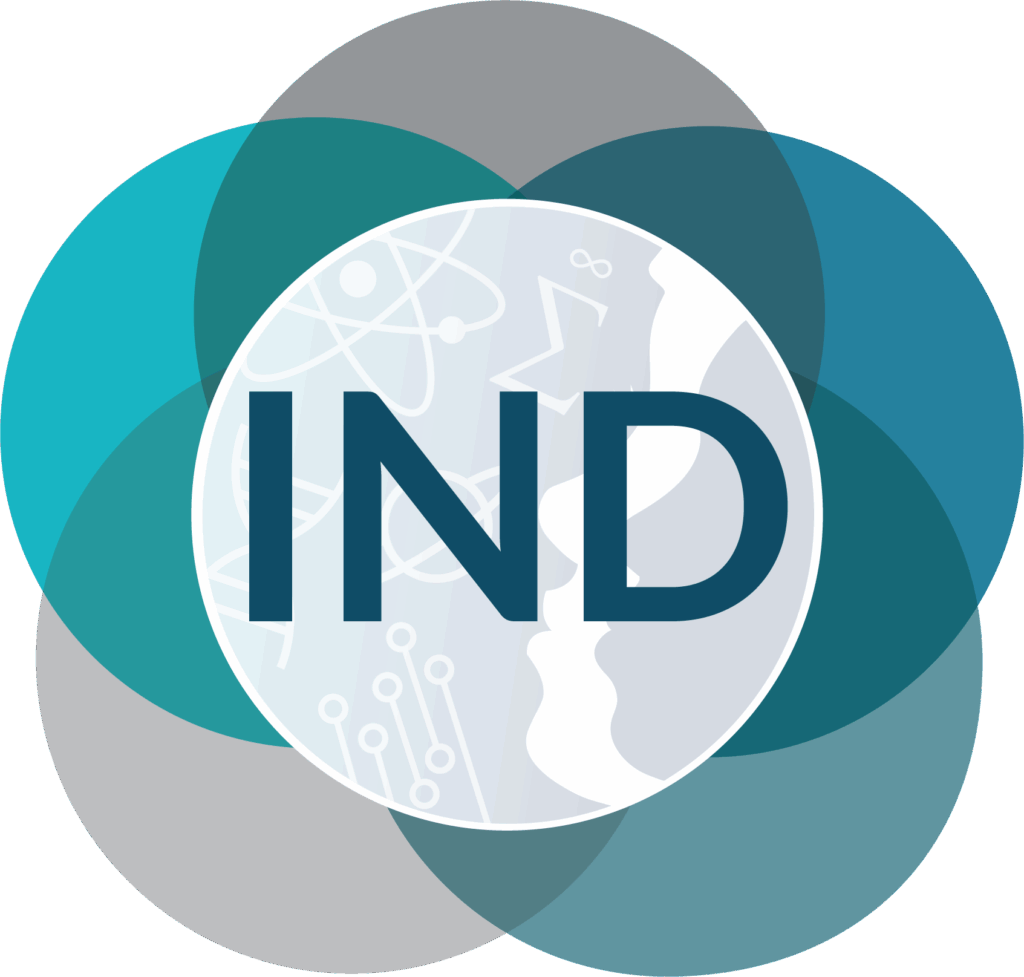
Individual Experiences
Developing an awareness of self and others’ social and cultural identities, the intersectionality of those identities, and examining the role that identity plays in creating effective learning and working environments.
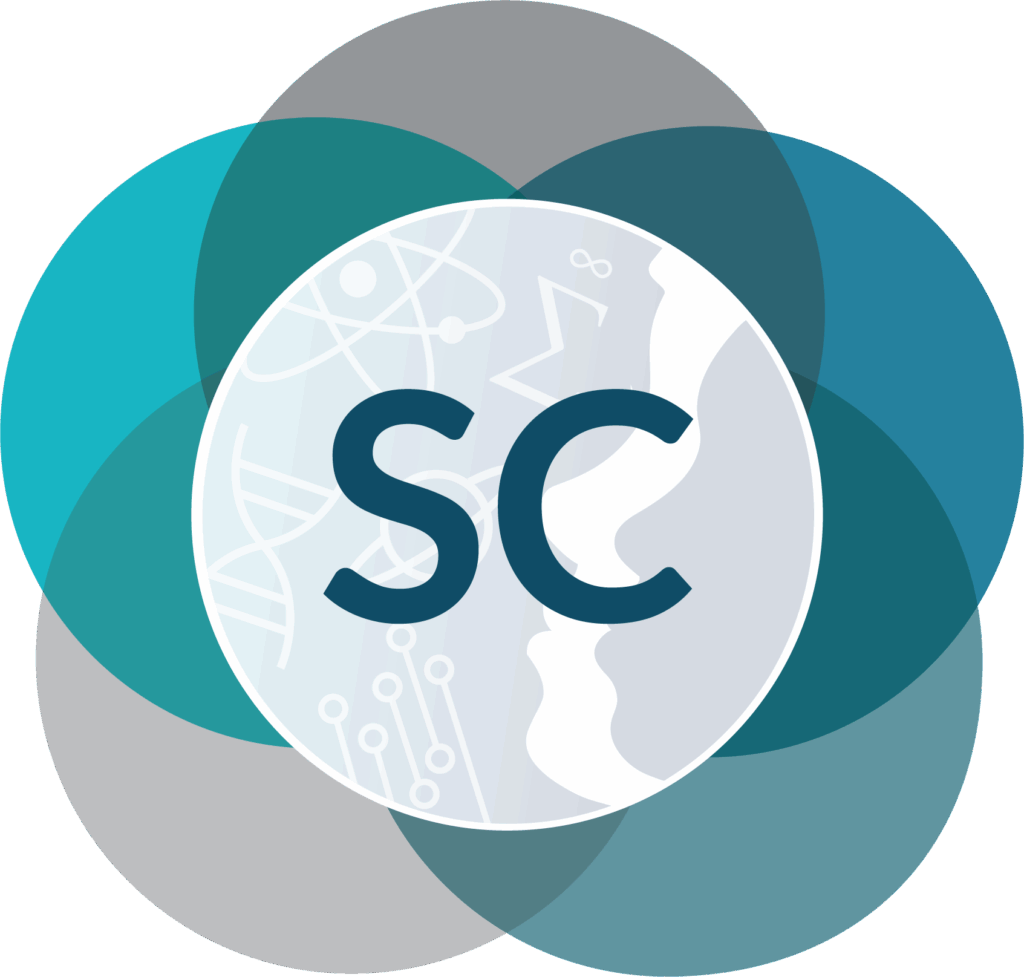
Social Contexts
Developing an understanding of cultural differences in ways that enable effective interactions with others from different racial, ethnic, or social identity groups in both domestic and international contexts.
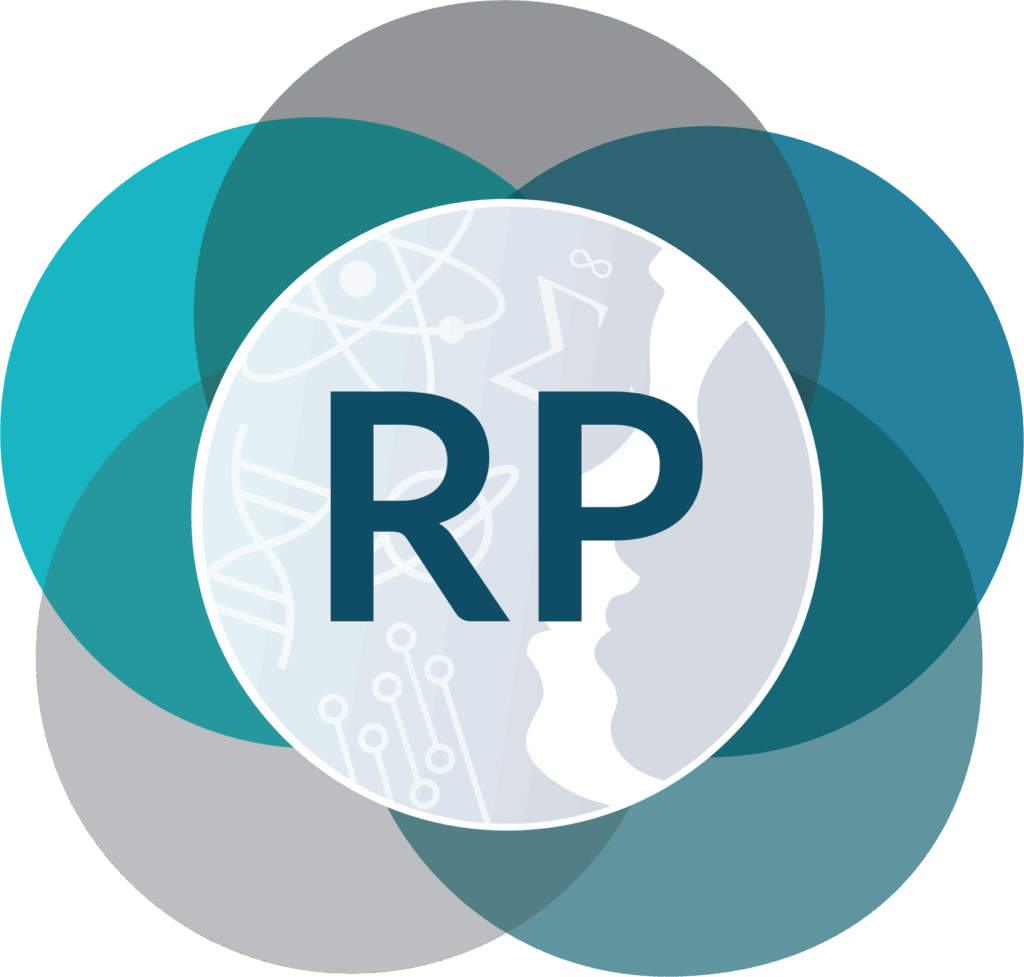
Relationships and Partnerships
Building one-on-one connection, trust and relationship through effective communication and relational skills, which support effective interpersonal interaction. Effective communication includes learning to tell stories effectively, to use plain language, and to listen deeply.
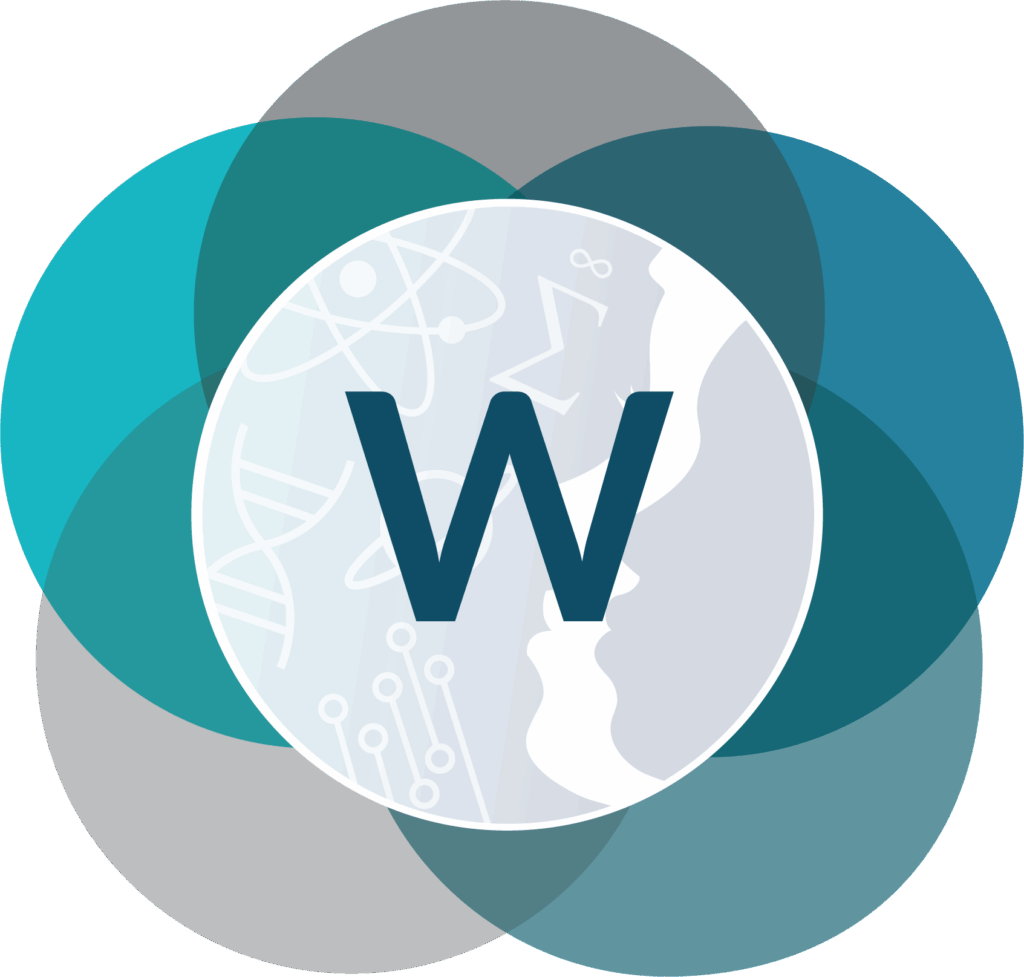
Wellness
Building an awareness of what wellness means for oneself and others you engage or work with and holding boundaries to protect that for yourself and those others is fundamental to productivity and success. Overwhelmed students struggle to complete assignments. Stress can cause illness. Sick colleagues struggle to meet deadlines. Burnout can cause valuable people in the system to quit. Good self-management and management of others, whether a direct supervisor or not, whether managing up or down, requires attentiveness to wellness. Effective change in systems depends on healthy people in the system to make the system function adaptably, smoothly, and well.
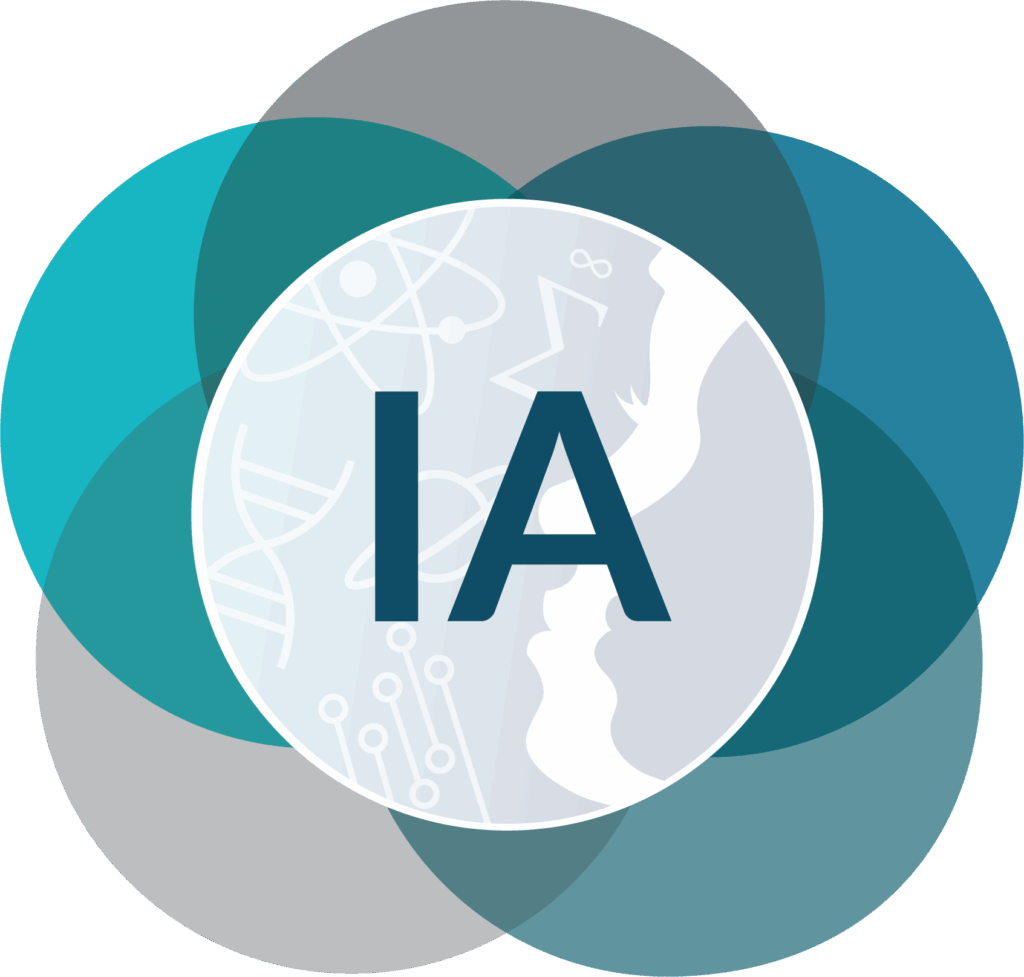
Influential Actions
Every time instructors teach, they are engaging in an effort to transfer knowledge. This is an influential action. All people in an organization get reactions from others. How intentional we are about helping others to feel welcome, excluded, cared for, or ignored has an impact whether or not we are choosing that. Understanding influential actions that cause connection and disconnection, that can help bring more people to care about a cause is crucial for successful change.
Application to Professional Contexts
Integrative Professional Framework for Faculty
The IPF: Faculty promotes student success and faculty enrichment by providing a set of skills in the five domains – Individual Experiences, Social Context, Wellness, Relationships & Partnerships, & Influential Actions – that can be integrated and applied to the practices across faculty roles such as teaching, research mentoring, advising, leadership, and colleagueship. These integrative skills also contribute to health and well-being, as well as positive working environments within the institutional boundaries.
WHY care about the IPF: Faculty? Supportive and positive working environments in faculty careers:
- Foster student success
- Attract undergraduates to majors and minors, nurtures postgraduate recruitment into disciplines, and supports institutional enrollment needs
- Support faculty in achieving and maintaining balance in their own approaches to their work
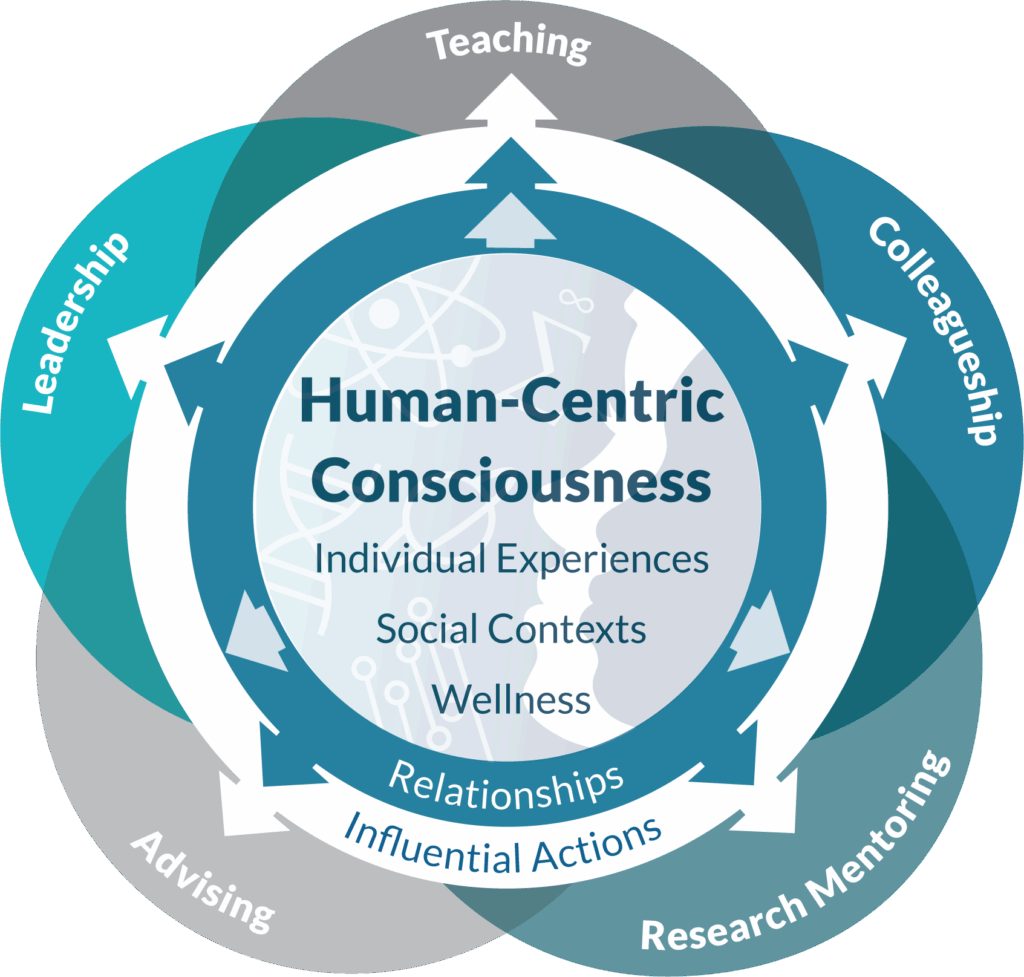
This is a diagram that shows the five specific domains that represent the Integrative Professional Framework (IPF) for Faculty: individual experiences, social context, wellness, relationships & partnerships, and influential actions, going from inside to outside. The diagram shows that awareness of the vast range of individual experiences and the knowledge and humility acquired from learning about the variety of social contexts that impact themselves and others, as well as attentiveness to one’s own and others’ wellness, are needed to comprise a human-centric consciousness that allows for resilient relationships and influential actions. It also depicts how those domains (experiences, social context, wellness, relationships, and actions) interact with each of five different faculty roles (advising, teaching, research mentoring, colleagueship, and leadership), listed around the diagram and represented by overlapping circles of different colors. These roles include teaching at the top, then in a clockwise direction: colleagueship, research mentoring, advising and leadership. In the middle are three circles. Within the innermost, there resides the Human-Centric Consciousness integratively comprised of the Individual Experiences, Social Context, and Wellness domains. From this circle there are five arrows pointing outwards to the five overlapping circles of the faculty roles and are within the second circle where the Relationships domain resides. From this second circle are five arrows pointing outwards to the five overlapping circles of the faculty roles and are within the third circle where the Influential Actions domain resides. From this third circle there are five more arrows that point into the five overlapping circles of the of the five faculty roles.
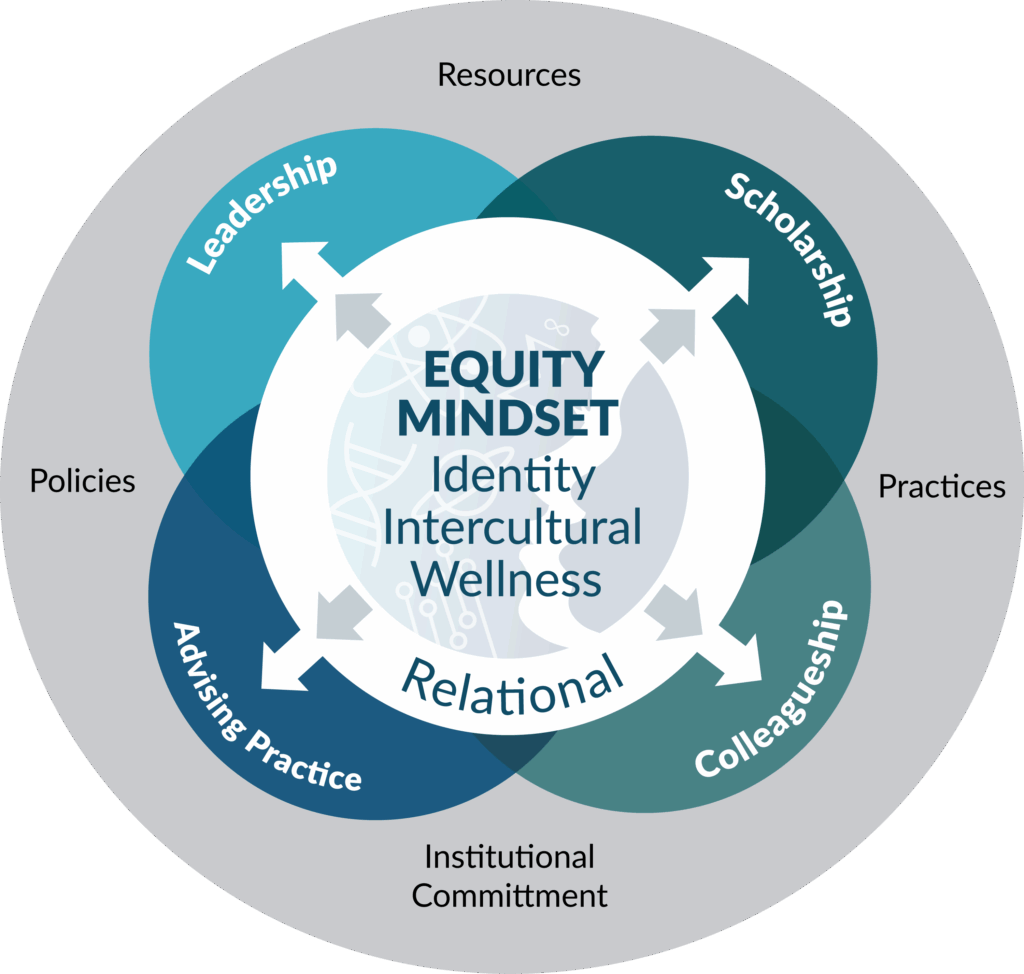
This is a diagram which shows the four specific domains that represent the Inclusive Professional Framework (IPF) for Advising: identity, intercultural, wellness, and relational. It also depicts how the domains interact with each of four different advising roles, listed around the diagram and represented by overlapping circles of different colors. These functions are scholarship at the top, then in clockwise direction: colleagueship, advising practice, and leadership. In the middle there are two circles. Within the innermost, there resides Equity-Minded Advising, comprised of the Identity, Intercultural, and Wellness domains. From this circle there are four arrows pointing outwards to the four overlapping circles of advising roles and are within the second circle where the Relational domain resides. From this second circle there are four more arrows that point into the four overlapping circles of the advising roles. Finally, there is a larger circle surrounding the entire diagram that represents actions that can be taken at the institutional level to fuel progress toward equitable advising practices. This larger circle contains resources at the top, then in a clockwise direction: practices, institutional commitment, and policies.
Inclusive Professional Framework for Advising
The IPF: Advising promotes student success by identifying a set of skills in the four domains – Identity, Intercultural, Wellness, and Relational – that can be integratively applied to practices across roles such as advising practice, leadership, scholarship, and colleagueship. These skills also contribute to well-being for individuals as well as engaging and supportive climates within the institutional advising units.
WHY care about the IPF: Advising? Supportive environments in advising students:
- Help students to feel that they matter, are valued and respected as educational customers, and help them to prioritize education in a positive manner
- Boost advisor engagement, capacity, learning, well-being and understanding of their work leading to better student outcomes, sustained or increased enrollment
Inclusive Professional Framework for Societies
The IPF: Societies promotes STEM culture reform by providing a set of skills in the three domains – Identity Awareness, Intercultural Mindfulness, and Inclusive Relationships, plus a fourth domain – Influential Actions – that is informed by the specific functions performed by the society. This skill set can be applied to inclusive practices across society functions such as governance & leadership, membership, convenings, recognition, and professional development.
WHY care about the IPF: Societies? Professional and disciplinary societies:
- Serve broad memberships
- Help define disciplinary norms and culture
- Inform accrediting bodies
Thus providing “excellent leverage with which to design and promote change” (NAP #11153).
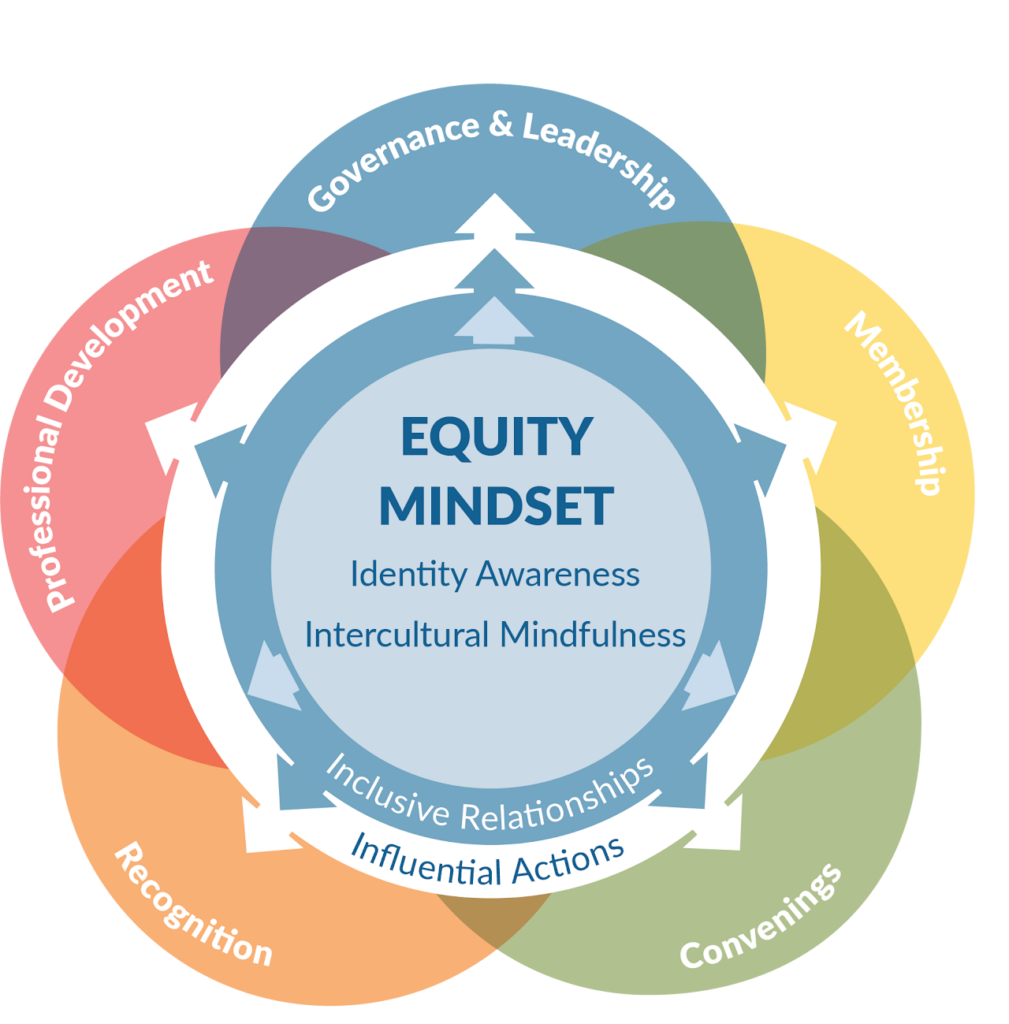
This is a diagram which shows the four specific domains that represent the Inclusive Professional Framework (IPF) for Societies: identity awareness, intercultural mindfulness, inclusive relations, and influential actions. It also depicts how the domains interact with each of five different society functions, listed around the diagram and represented by overlapping circles of different colors. These functions are governance & leadership at the top, then in clockwise direction: membership, convenings, recognition and professional development. In the middle there are three circles. Within the innermost, there resides the Equity Mindset comprised of the Identity Awareness and Intercultural Mindfulness domains. From this circle there are five arrows pointing outwards to the five overlapping circles of the society functions and are within the second circle where the Inclusive Relationships domain resides. From this second circle are five arrows pointing outwards to the five overlapping circles of the society functions and are within the third circle where the Influential Actions domain resides. From this third circle there are five more arrows that point into the five overlapping circles of the five societal functions.
